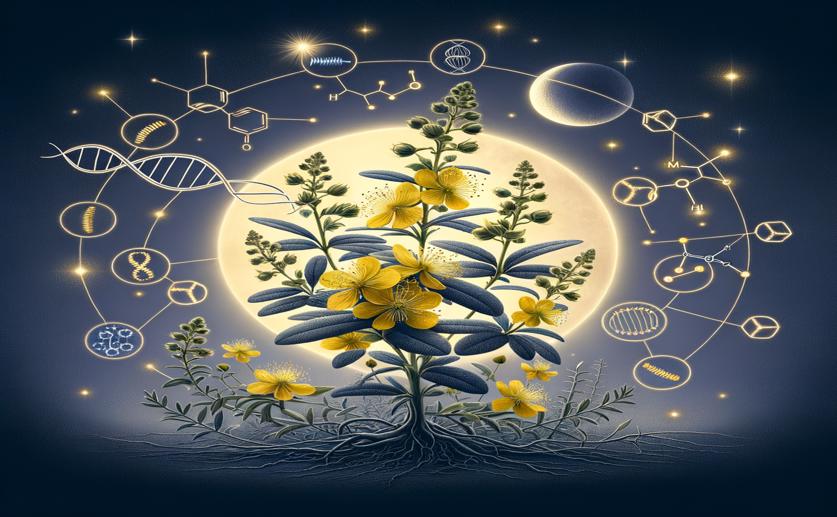
How Clock Protein Affects Melatonin Production in St. John's Wort
Greg Howard
20th September, 2024

Image Source: Natural Science News, 2024
Key Findings
- Researchers at Shaanxi Normal University discovered that melatonin synthesis in St. John's wort is regulated by an internal circadian clock
- The clock protein HpLHY binds to the melatonin biosynthesis gene HpSNAT1, inhibiting its expression in a 24-hour cycle
- Overexpressing HpLHY reduces melatonin levels, while loss-of-function mutants increase melatonin levels, confirming HpLHY's crucial role
References
Main Study
1) Clock protein LHY targets SNAT1 and negatively regulates the biosynthesis of melatonin in Hypericum perforatum.
Published 20th September, 2024
https://doi.org/10.1126/sciadv.adq6505
Related Studies
2) Anti-Tumor Activity of Hypericum perforatum L. and Hyperforin through Modulation of Inflammatory Signaling, ROS Generation and Proton Dynamics.
3) Clinical use of Hypericum perforatum (St John's wort) in depression: A meta-analysis.
4) Interactions between clopidogrel and traditional Chinese medicine.



 12th September, 2024 | Greg Howard
12th September, 2024 | Greg Howard